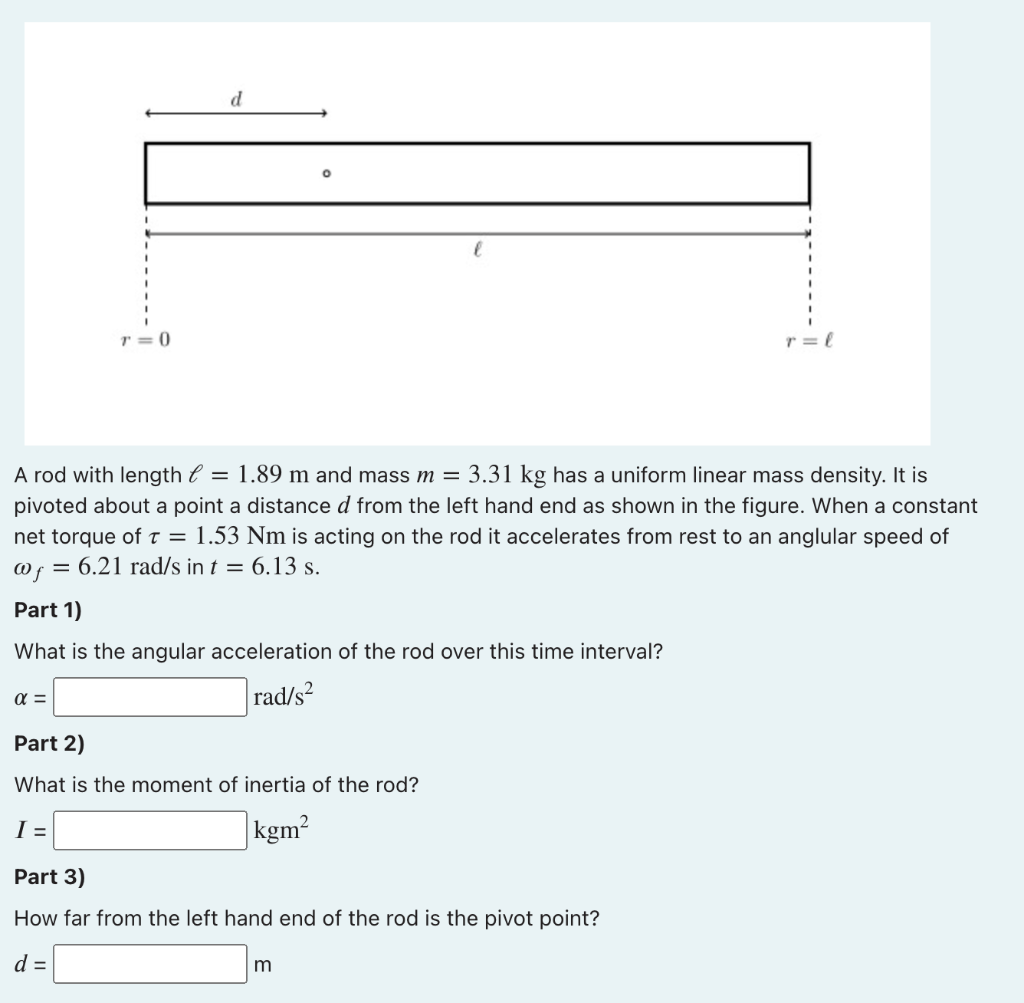r = 0 r = l A rod with length e = 1.89 m and mass m = 3.31 kg has a uniform linear mass density. It is pivoted about a point a distance d from the left hand end as shown in the figure. When a constant net torque of t = 1.53 Nm is acting on the rod it accelerates from rest to an anglular speed of @f = 6.21 rad/s in t = 6.13 s. Part 1) What is the angular acceleration of the rod over this time interval? rad/s² Part 2) What is the moment of inertia of the rod? I = kgm? Part 3) How far from the left hand end of the rod is the pivot point? d = m
r = 0 r = l A rod with length e = 1.89 m and mass m = 3.31 kg has a uniform linear mass density. It is pivoted about a point a distance d from the left hand end as shown in the figure. When a constant net torque of t = 1.53 Nm is acting on the rod it accelerates from rest to an anglular speed of @f = 6.21 rad/s in t = 6.13 s. Part 1) What is the angular acceleration of the rod over this time interval? rad/s² Part 2) What is the moment of inertia of the rod? I = kgm? Part 3) How far from the left hand end of the rod is the pivot point? d = m
Related questions
Question

Transcribed Image Text:r = 0
r = l
A rod with length e = 1.89 m and mass m = 3.31 kg has a uniform linear mass density. It is
pivoted about a point a distance d from the left hand end as shown in the figure. When a constant
net torque of t = 1.53 Nm is acting on the rod it accelerates from rest to an anglular speed of
@f = 6.21 rad/s in t = 6.13 s.
Part 1)
What is the angular acceleration of the rod over this time interval?
rad/s²
Part 2)
What is the moment of inertia of the rod?
I =
kgm?
Part 3)
How far from the left hand end of the rod is the pivot point?
d =
m
Expert Solution
This question has been solved!
Explore an expertly crafted, step-by-step solution for a thorough understanding of key concepts.
Step by step
Solved in 2 steps with 2 images
